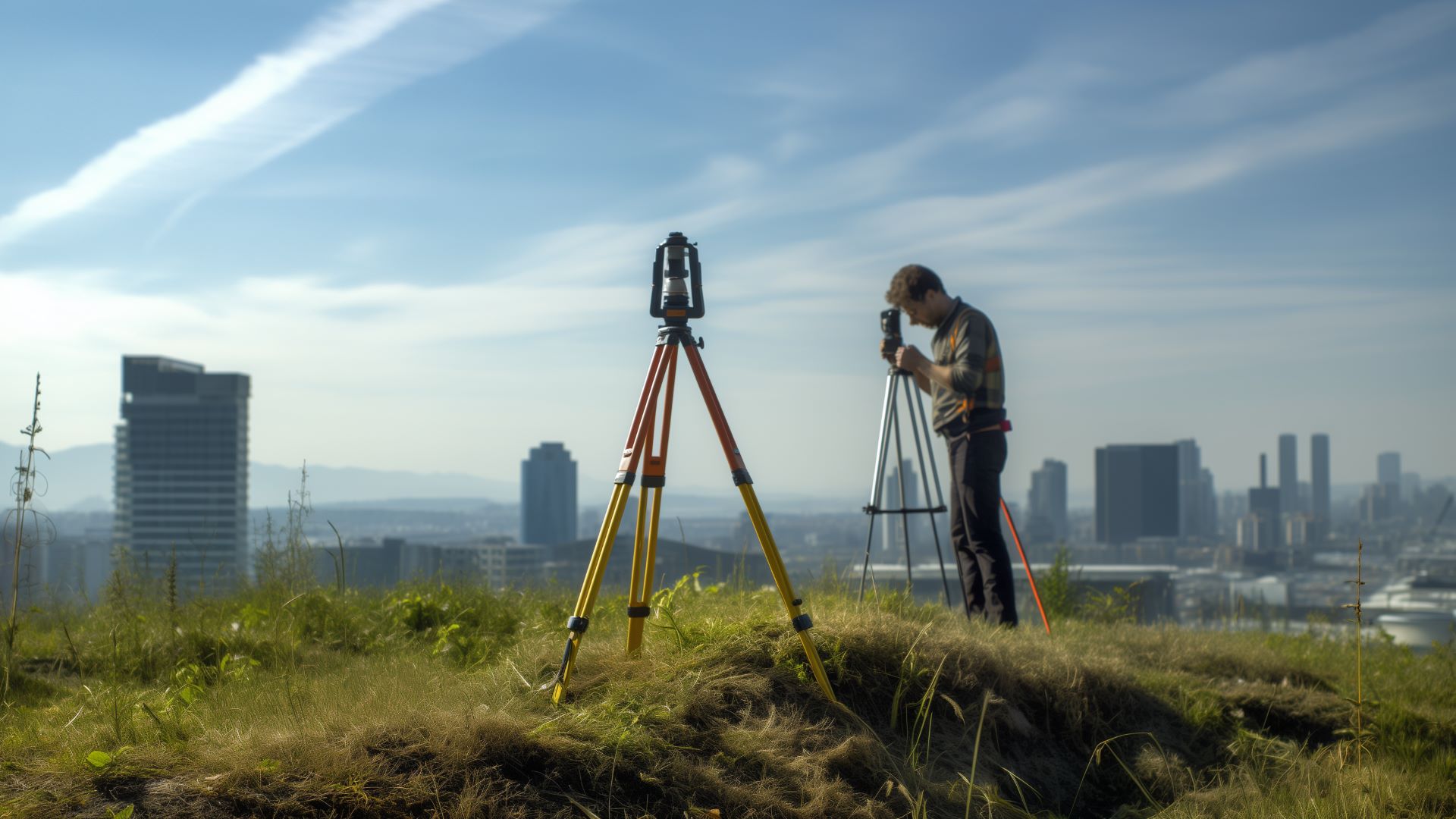
How Eco-Engineering Can Build a Sustainable Future
July 12, 2022 - Ellie Gabel
Revolutionized is reader-supported. When you buy through links on our site, we may earn an affiliate commision. Learn more here.
Eco-engineering could bridge the divide between the environment and human innovation.
Around the world, engineered projects — from single buildings to entire cities — are often built with little regard for the environment around them. As a result, new construction can disrupt entire habitats or ecosystems.
Many engineers are looking for a better approach — a way to redesign urban environments and ecosystems in a way that integrates human society with nature.
Ecological engineering, or eco-engineering, is an emerging discipline that combines ecology and engineering to design structures and ecosystems that work well together — enabling a synergistic relationship between the built environment and the natural environment.
What Is Eco-Engineering?
The field has developed over the past 40 years, with some of the biggest developments coming in the last 20 years.
The definition of ecological engineering and the field’s goals vary slightly, depending on who you ask.
At a 1993 workshop sponsored by the National Research Council, ecological engineering was defined as “the design of sustainable ecosystems that integrate human society with its natural environment for the benefit of both.”
The field combines research from both theoretical and applied ecology, as well as practical knowledge from existing ecological engineering projects.
In short, the goals of eco-engineering as a field are primarily the restoration of ecosystems that have been disturbed by human activity, and the development of new sustainable ecosystems that provide value to both humans and nature.
The Present and Future of Ecological Engineering
In practice, eco-engineers focus on managing and restoring ecosystems. Unlike other engineers, the ecological engineer doesn’t have full control over all the moving parts of the system that they design. Instead, they rely on adjustments to the natural environment to ensure long-term change and sustainability of rehabilitated or new ecosystems.
The scale of eco-engineering can vary significantly from project to project. One project, for example, may be limited to just the scope of a single mesocosm — a bounded outdoor space that may be just a few square meters in size.
Other projects may go beyond the scope of ecosystems and aim to reinvent regional systems that can be tens of square kilometers in size.
Common examples of eco-engineering in practice include sustainable agriculture projects that encourage farmers in an area to adopt eco-friendly planting, harvesting and crop management practices.
The field is still young compared to other engineering disciplines. However, there are signs that it is growing fast. Several universities have begun developing or already offer ecological engineering programs, and the Journal of Ecological Engineering has reported a steady increase in the number of submissions over the past few years.
As the conversation around sustainability, environmental governance and climate change continues to develop, it’s likely that eco-engineering may attract much more attention.
The Core Principles of Eco-Engineering
Over the years, a few basic concepts in ecological engineering have emerged that distinguish the field’s approach from more conventional engineering. However, the field doesn’t yet have a widely accepted set of principles that define the goals, mission and best practices of ecological engineering.
A number of ecologists and ecological engineers have proposed different principles for the field.
For example, these are the seven principles of eco-engineering proposed by ecological engineers Andreas Schönborn & Ranka Junge in 2021:
Principles One Through Four: Resource Use and Nature as a Model
- Avoidance: Where there is a perceived need, like energy generation or wastewater treatment, engineers should avoid or minimize that need. Avoiding certain needs can make a project more eco-friendly and sustainable. For example, engineers may try to identify how a project can use solely renewable energy.
- Ecological processes and organisms as a tool or model: Ecological engineering projects should use or emulate processes described in ecological science. Ecological engineers often use nature-based solutions to solve both human and ecological problems. For example, a soil element may help filter water on a project site. A new building that needs to be kept cool may be modeled after termite mounds, which have a naturally self-cooling structure. Both natural solutions and inspiration from nature may help ecological engineers solve problems.
- Maximum of renewable energy: Ecological engineering projects should aim to use 100% renewable energy. If the project can’t use entirely renewable energy right away, it should ideally use 100% renewable energy before the end of its lifespan. In general, engineers should avoid using non-renewable resources.
- Maximum of recycling efficiency: Ecological engineering projects should aim for a high rate of recycling within the project bounds. Ideally, the system should be able to recycle waste products — like dead plant matter — back into itself.
Principles Five Through Seven: Minimizing Externalities, Maximizing Quality
- Low externalized environmental costs during life-cycle: A project should have as little negative environmental impact as possible. Examples of environmental externalities include the production of carbon dioxide, water consumption and energy use. Engineers can offset these externalities with techniques like carbon capture, the use of green building materials or water recycling.
- Design for multifunctionality: Ecological engineering designs should attempt to harness multiple ecological functions. A designed wetland ecosystem, for example, may provide several functions, including wastewater treatment, a biotope for local insects and cooling for a local neighborhood or large structure (depending on the wetland’s size).
- Enhancement of quality for both humans and nature: Both people and the natural world are beneficiaries of a good ecological engineering design. Each project should improve the quality of life for all potential beneficiaries — which may include the inhabitants of a building or community, as well as flora and fauna and their habitats. In general, stakeholders should be able to to participate in the design process and give feedback on how the project could impact them and their communities.
Ecological Engineering in Practice
While the field of ecological engineering is new, there are already a large number of projects in line with ecological engineering principles.
These projects use careful management of the natural environment to improve the quality of life for all inhabitants of an area — including people, animals and plants.
Constructed Wetlands for Water Treatment
One of the best examples of eco-engineering is the constructed or rehabilitated wetland.
“Construction” and “wetland” may seem like a contradiction in terms, but the two words make perfect sense together in the context of ecological engineering.
Constructed wetlands are engineering project environments that replicate the natural processes extant in natural wetlands.
In a constructed wetland, plants, animals, microorganisms and the environment — particularly sun, soil and wind — work together to provide quality of life improvements for the immediate environment, surrounding ecosystems and local communities.
The immediate goal of a constructed wetland is usually water treatment. When engineers can build and maintain these wetlands effectively, they’re often a powerful tool for removing “many pollutants associated with municipal and industrial wastewater and stormwater,” according to Joe Gelt of the University of Arizona’s Water Resources Research Center. These pollutants can include “BOD, suspended solids, nitrogen, phosphorus, hydrocarbons, and even metals.”
As a result, a constructed wetland can help to treat wastewater from a wide variety of sources — like municipal wastewater, industrial wastewater, agricultural runoff and even acid mine drainage.
Other Benefits of Constructed Wetlands
In addition to wastewater treatment, constructed wetlands can also provide valuable habitat for a wide variety of flora and fauna, including endangered or vulnerable species.
Through technology like surface water heat pumps (SWHPs), constructed wetlands can also serve as heat sinks or energy storage that can provide efficient heating and cooling for nearby buildings. In addition to using 100% renewable energy, a constructed wetland may also be able to decrease the use of energy outside project bounds.
Building a More Sustainable World With Ecological Engineering
Around the world, engineers may plan projects with little regard for the local environment. As a result, new construction can disrupt entire ecosystems.
Many engineers are looking for a better approach — a way to redesign urban environments and ecosystems in a way that integrates human society with nature.
Ecological engineering, or eco-engineering, is an emerging discipline that combines ecology and engineering to design structures and ecosystems that work well together — enabling a synergistic relationship between the built environment and the natural environment.
Revolutionized is reader-supported. When you buy through links on our site, we may earn an affiliate commision. Learn more here.
Author
Ellie Gabel
Ellie Gabel is a science writer specializing in astronomy and environmental science and is the Associate Editor of Revolutionized. Ellie's love of science stems from reading Richard Dawkins books and her favorite science magazines as a child, where she fell in love with the experiments included in each edition.





great article on ecosystem-friendly engineering and how to achieve it.